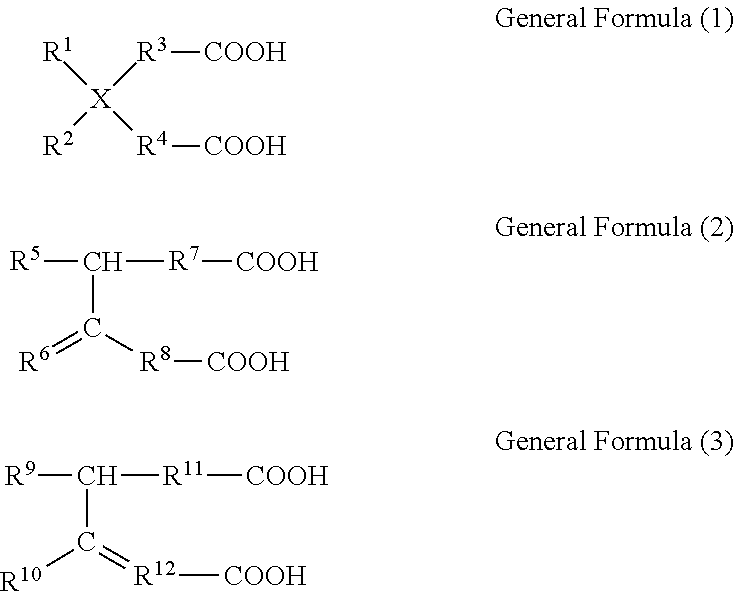Toner for electrostatic image development
a technology of electrostatic image and toner, which is applied in the field of toner for electrostatic image development, can solve the problems that both low-temperature fixability and post-fixing separability cannot be achieved in a satisfactory manner, and the bleeding of crystalline materials cannot be suppressed sufficiently, so as to achieve good post-fixing separability and sufficient low-temperature fixability
- Summary
- Abstract
- Description
- Claims
- Application Information
AI Technical Summary
Benefits of technology
Problems solved by technology
Method used
Image
Examples
example 1
[0155]A reaction vessel equipped with a stirrer, a condenser tube and a thermometer was charged with 276 parts by mass of the dispersion of the amorphous polyester resin [A1], 69 parts by mass of the dispersion of the amorphous polyester resin [B1], 86.4 parts by mass of the dispersion of the crystalline polyester resin [C1], 77.3 parts by mass of the wax dispersion, 41.3 parts by mass of the colorant dispersion, 225 parts by mass of ion exchanged water and 2.5 parts by mass of sodium polyoxyethylene lauryl ether sulfate, and 0.1N hydrochloric acid was added under stirring to adjust the pH of the mixture to 2.5.
[0156]Next, 0.3 parts by mass of an aqueous poly-aluminum chloride solution (a 10% aqueous solution in terms of AiC13) was added dropwise over 10 minutes, and the temperature inside the vessel was increased to 60° C. under stirring. The temperature was further gradually increased to 75° C., and the temperature inside the vessel was maintained at 75° C. Then measurement was pe...
examples 2 to 13
[0159]Toners [2] to [13] were obtained in the same manner as in Example 1 except that one of compositions in TABLE 2 was used.
production examples 1 to 16
of Developer
[0165]Developers [1] to [16] were produced by adding a ferrite carrier having a volume-based average diameter of 60 μm and coated with a silicone resin to each of the toners [1] to [16] such that the concentration of the toner was 6% and then mixing them.
[0166]The developers [1] to [16] were evaluated as follows.
(1) Low-Temperature Fixability:
[0167]A fixation experiment was performed using a commercial multi-function full color printer-copier “bizhub PRO C6501” (manufactured by Konica Minolta Inc.) including a fixing unit modified such that the surface temperature of a fixation heating roller could be changed within the range of 100 to 210° C. In the fixation experiment, one of the above developers was installed in the copier, and a solid image with a toner adhesion amount of 11 mg / 10 cm2 was fixed on an A4 plain paper sheet (basis weight: 80 g / m2). The fixation experiment was repeated at different fixation temperature settings. More specifically, the fixation temperatur...
PUM
| Property | Measurement | Unit |
|---|---|---|
| Percent by mass | aaaaa | aaaaa |
| Percent by mass | aaaaa | aaaaa |
| Melting point | aaaaa | aaaaa |
Abstract
Description
Claims
Application Information
 Login to View More
Login to View More - R&D
- Intellectual Property
- Life Sciences
- Materials
- Tech Scout
- Unparalleled Data Quality
- Higher Quality Content
- 60% Fewer Hallucinations
Browse by: Latest US Patents, China's latest patents, Technical Efficacy Thesaurus, Application Domain, Technology Topic, Popular Technical Reports.
© 2025 PatSnap. All rights reserved.Legal|Privacy policy|Modern Slavery Act Transparency Statement|Sitemap|About US| Contact US: help@patsnap.com



